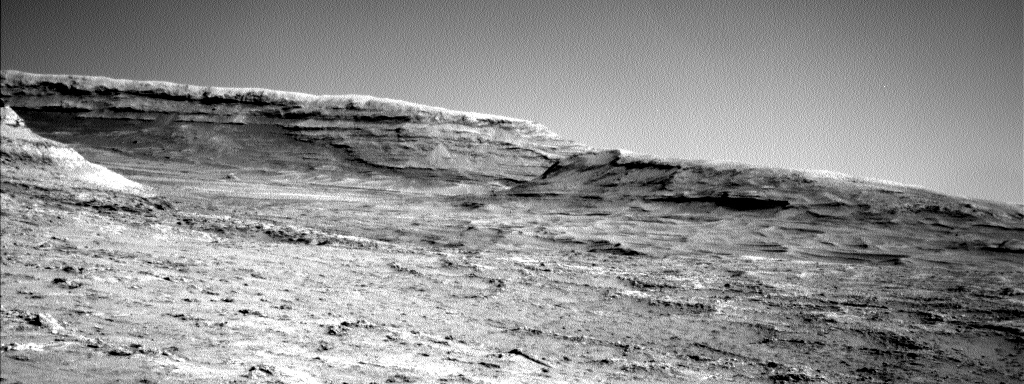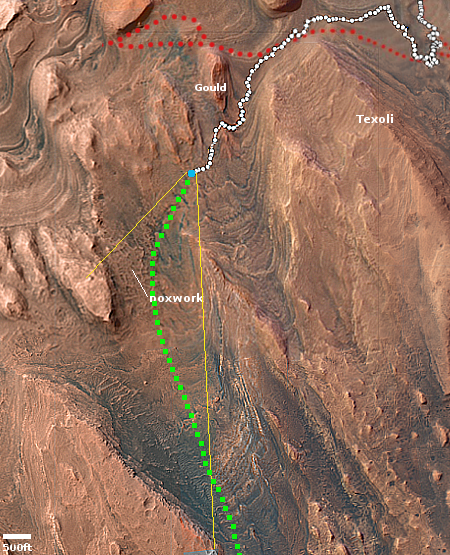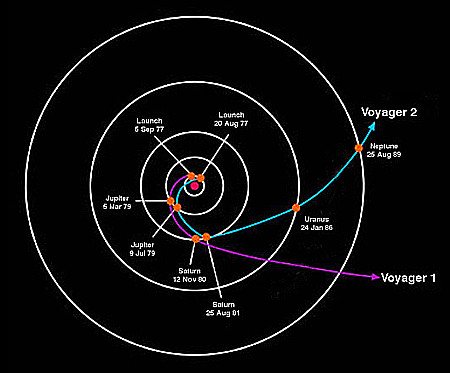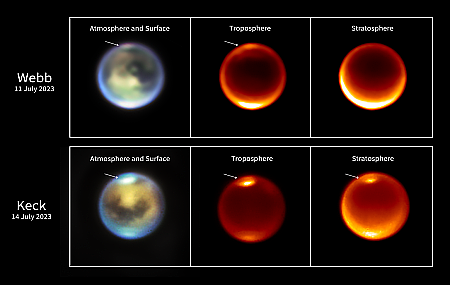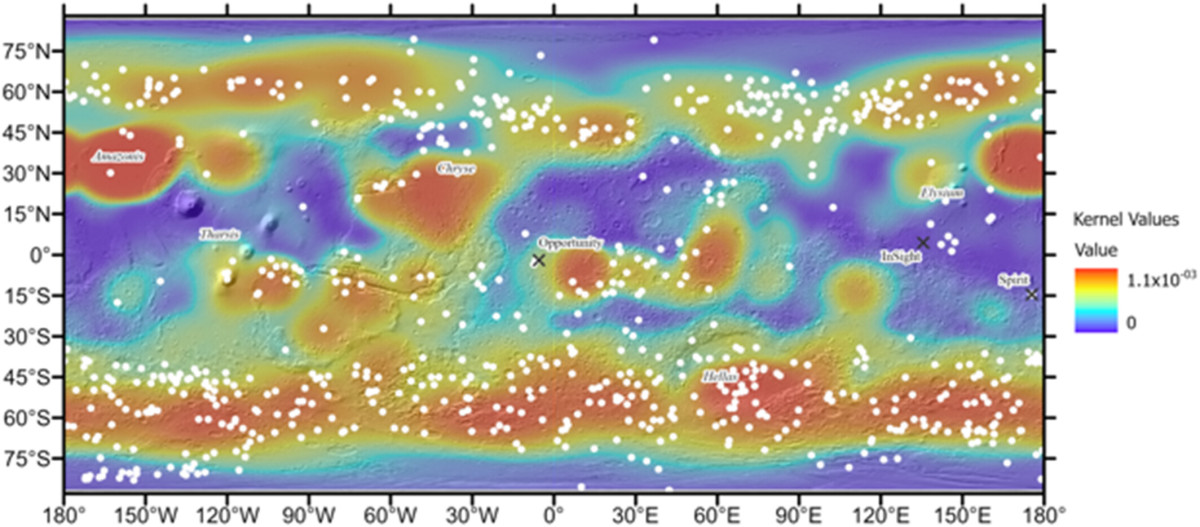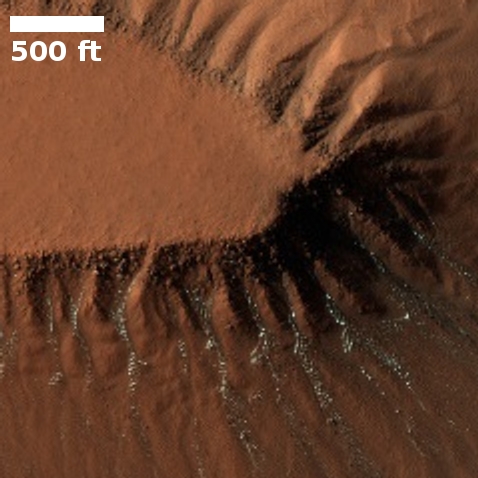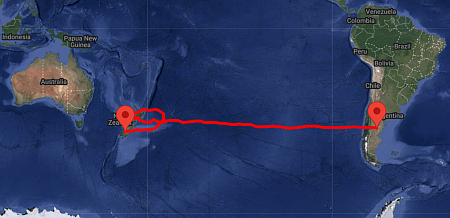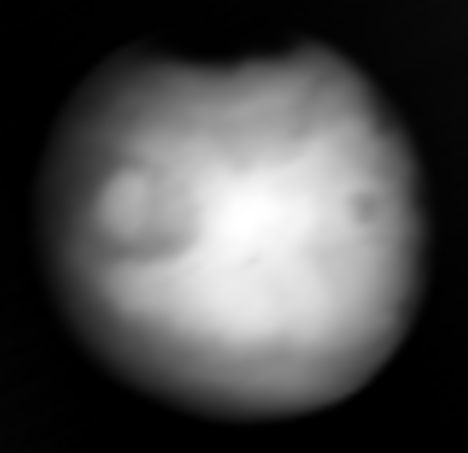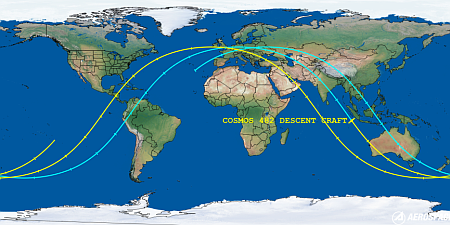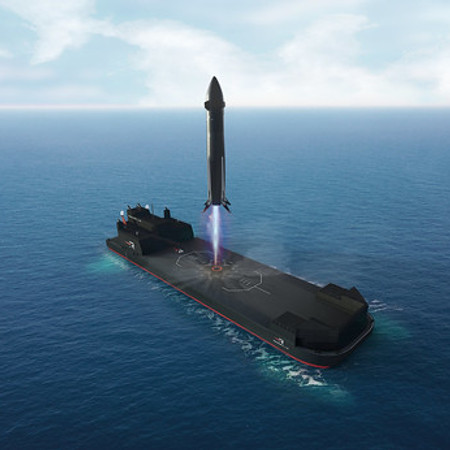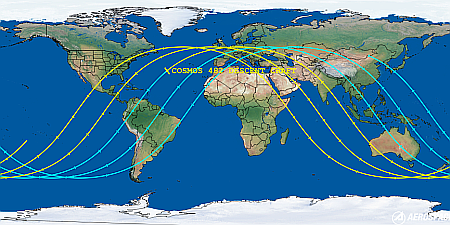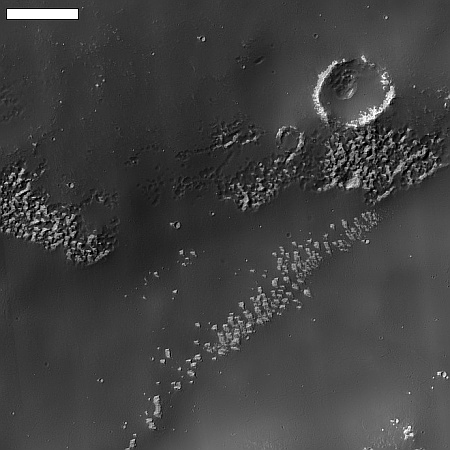Curiosity looks uphill at boxwork and future travels
Cool image time! The panorama above, taken on May 14, 2025 by the left navigation camera on the Mars rover Curiosity, takes a look uphill at the canyon that the rover is now entering.
The overview map to the right gives the context. The blue dot marks the rover’s location when the picture was taken, and the yellow lines indicate approximately the view of the panorama above. If you look closely at the ground at the base of the cliff on the right, you can see the boxwork ridges indicated on the overview map.
The red dotted line marks the original planned route of the rover. The science team abandoned that plan several months ago in order to get to the boxwork geology as quickly as possible. It expects to reach that boxwork sometime in the next month or so.
Based on the proposed route posted in September 2023, after the scientists have completed their observations of the boxwork the rover will continue uphill within this canyon, bearing east as it parallels that 100-foot-high cliff seen on the horizon. The green dotted line indicates roughly that future route.
Cool image time! The panorama above, taken on May 14, 2025 by the left navigation camera on the Mars rover Curiosity, takes a look uphill at the canyon that the rover is now entering.
The overview map to the right gives the context. The blue dot marks the rover’s location when the picture was taken, and the yellow lines indicate approximately the view of the panorama above. If you look closely at the ground at the base of the cliff on the right, you can see the boxwork ridges indicated on the overview map.
The red dotted line marks the original planned route of the rover. The science team abandoned that plan several months ago in order to get to the boxwork geology as quickly as possible. It expects to reach that boxwork sometime in the next month or so.
Based on the proposed route posted in September 2023, after the scientists have completed their observations of the boxwork the rover will continue uphill within this canyon, bearing east as it parallels that 100-foot-high cliff seen on the horizon. The green dotted line indicates roughly that future route.

